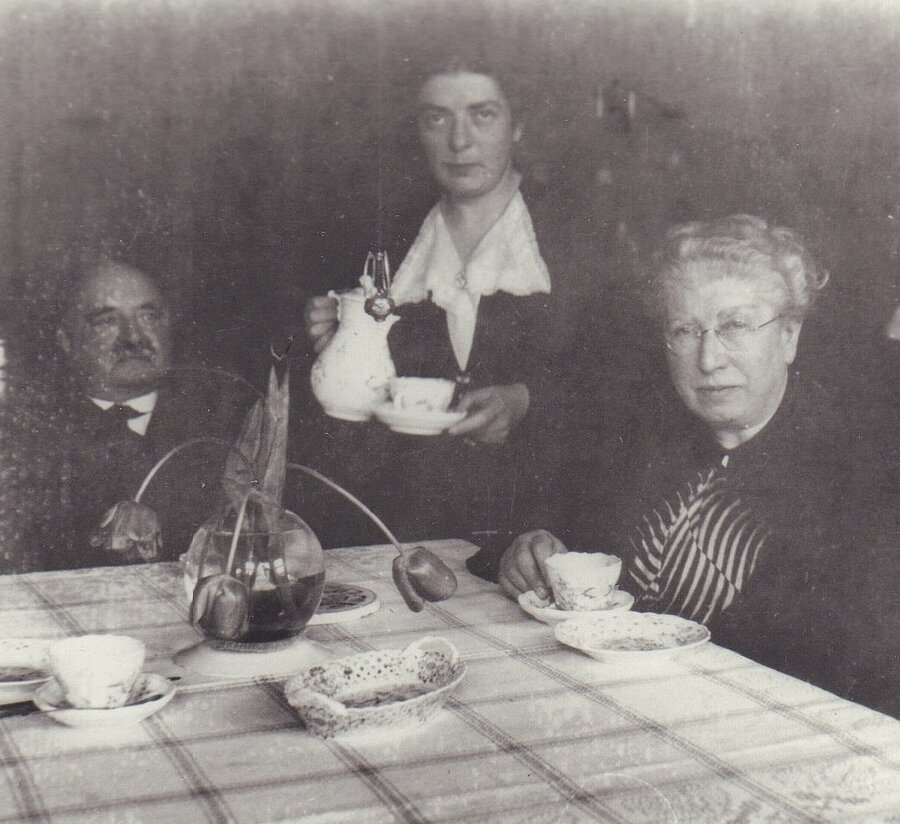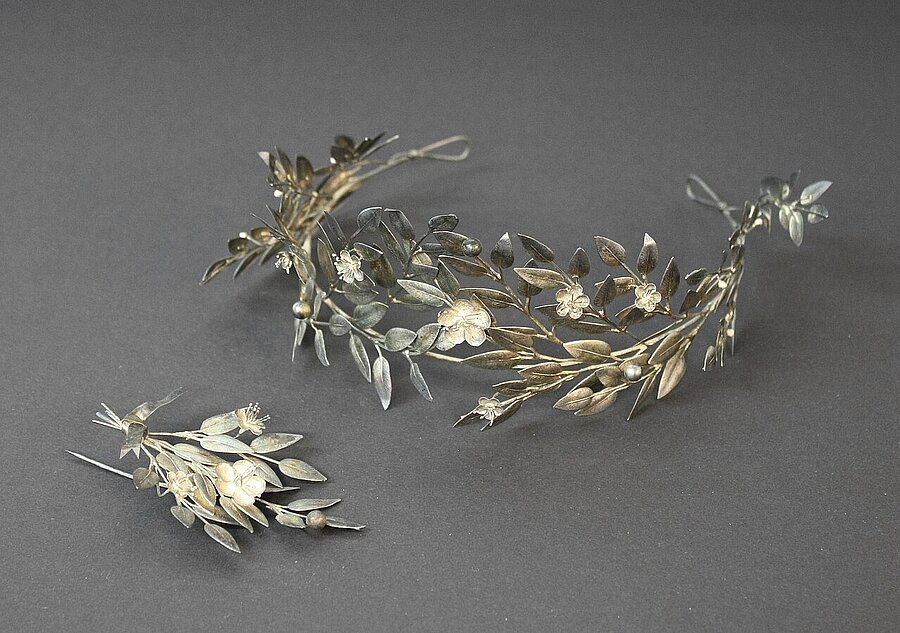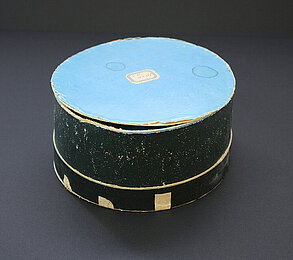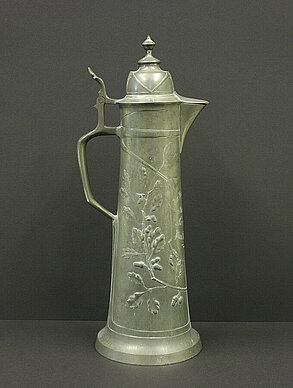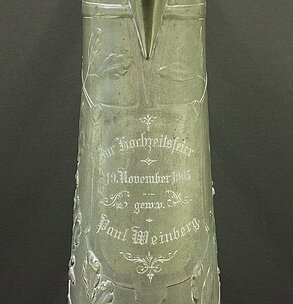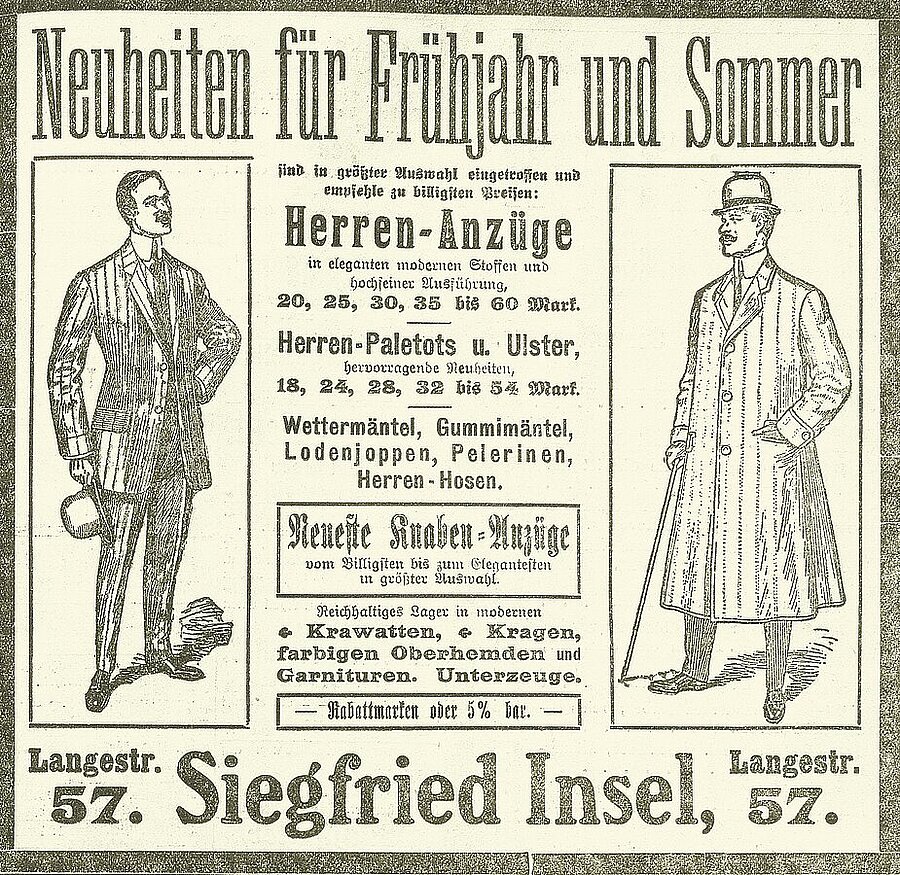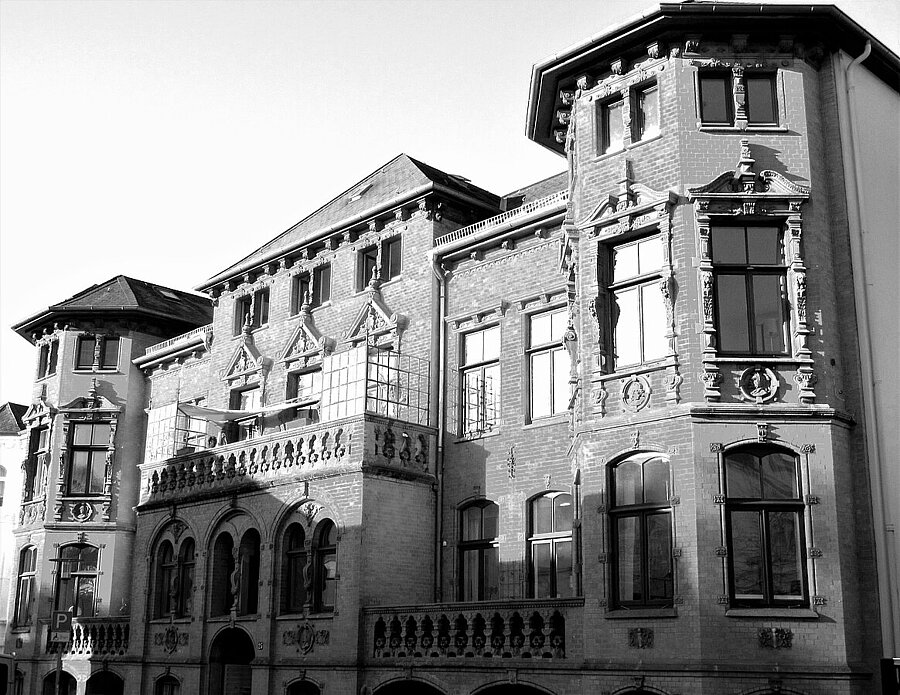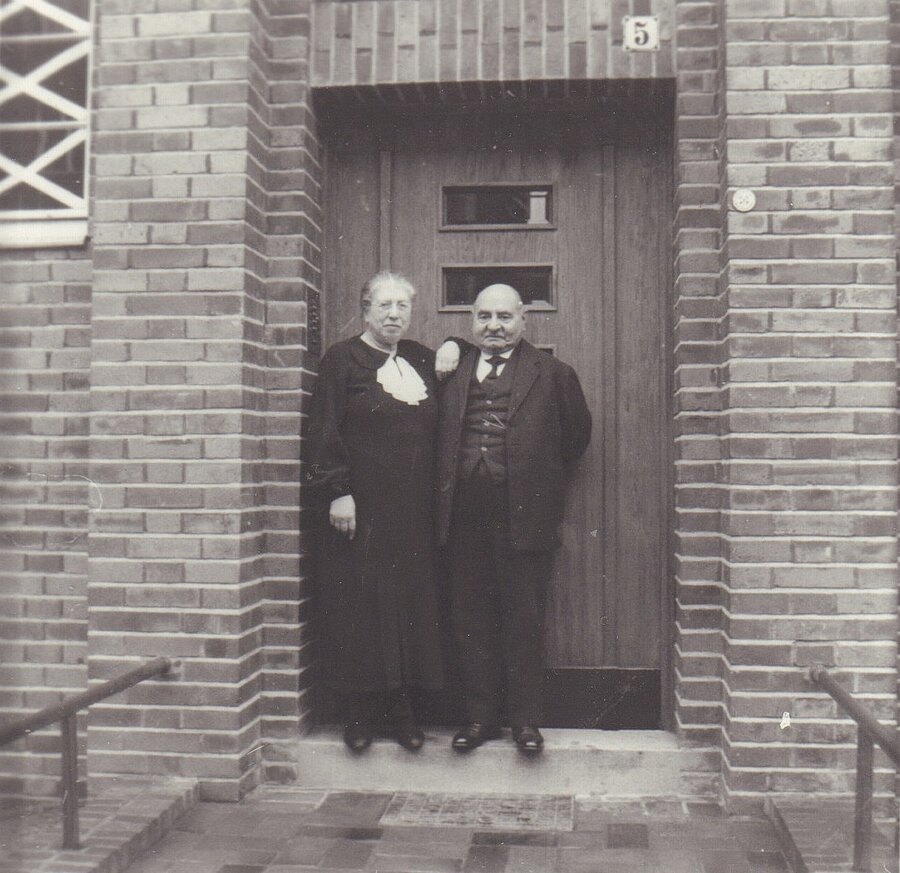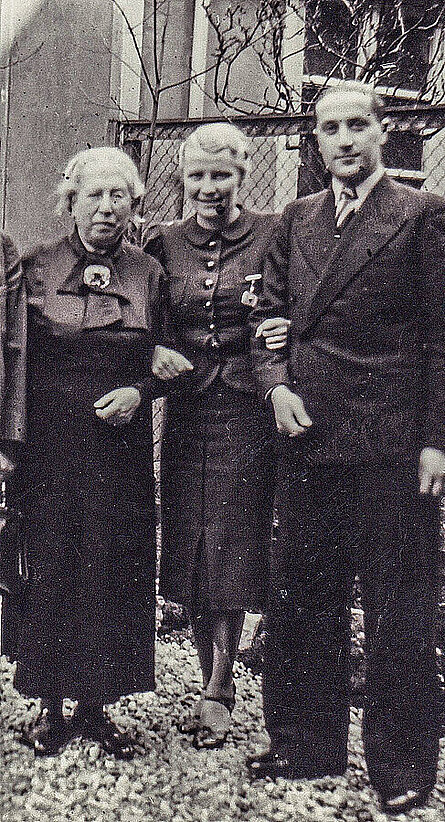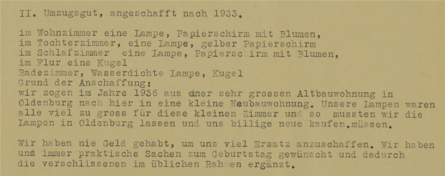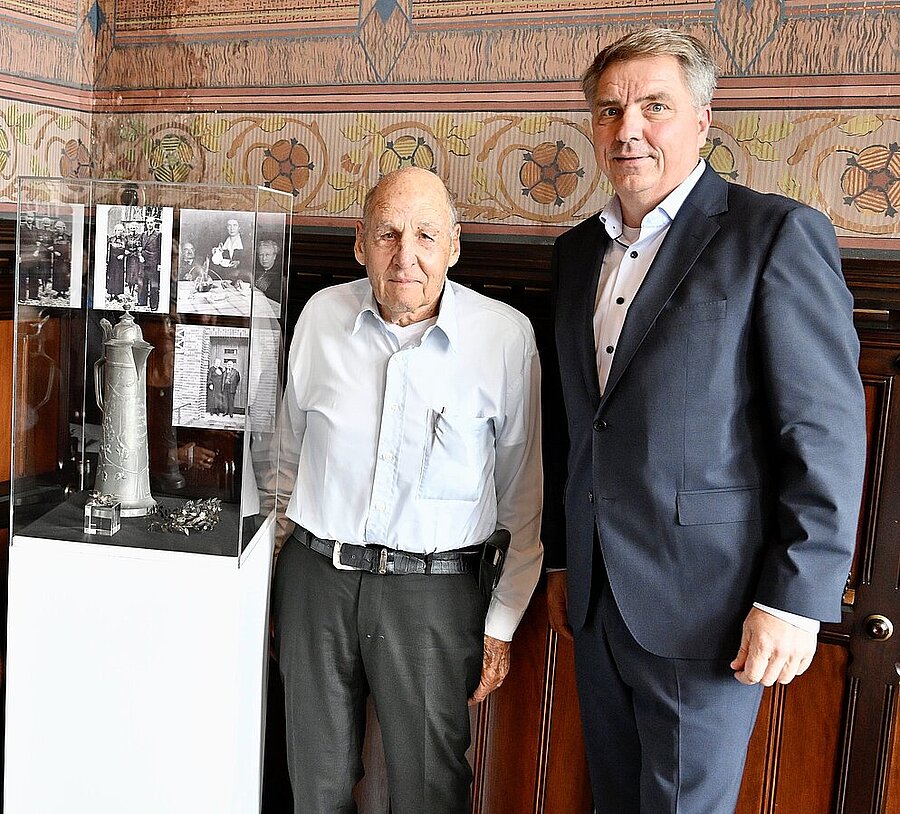Returned objects from the property of Henny and Siegfried Insel
Three special items that were previously part of the collection of the Stadtmuseum Oldenburg (Oldenburg City Museum) had formerly been in the ownership of the Jewish married couple Henny and Siegfried Insel from Oldenburg. The objects provide insight into the history of the Insel family and their painful fate during the National Socialist era. All four Oldenburg family members were murdered in Nazi extermination camps.
The objects they formerly possessed are a pewter jug bearing a dedication inscription for a wedding feast and a jewelry set for the silver wedding anniversary, consisting of an ornately crafted tiara and a pin made of silver-plated metal. In 1997, these objects came into the custody of the museum as a donation made by an Oldenburg citizen.
His parents had friendly contact with Henny and Siegfried Insel in the 1930s. When they involuntarily left Oldenburg in September 1936, the Insel couple gave them the pewter jug and the wedding jewelry. Shortly after their move, they wrote a postcard to their Oldenburg friends in which they thanked them cordially "for all the efforts". Presumably, the friends had helped them prepare the move. Both this card as well as another were donated to the Stadtmuseum in 2021.
The Oldenburg Insel family and their painful fate under the tyranny of the Nazi regime
The businessman Siegfried Insel, born in Berne in 1859, and his wife Henny, born in Hameln in 1873, had moved from the Wesermarsch to the nearby town of Oldenburg in 1903. The family initially lived at Lange Straße 57, where Siegfried Insel founded a store for men's and boys' fashion. The couple had two children: Grete, born in Berne in 1903, and Hermann, who was born in Oldenburg in 1910. In 1911, the family of four moved into a large old apartment in the so-called “Yellow Castle” at the renowned Roggemannstraße 25, where Siegfried Insel then built up a successful insurance agency. From 1924 to 1933, he represented the insurance company Rhein-Mosel as its main agent in Oldenburg. But in 1934 he lost his position as a representative. Siegfried Insel was still listed as a merchant in the city's commercial register until 1935. After that, his buisiness entries in the Oldenburg address book also came to an end.
Pressured by the increasing discrimination and economic hardship experienced by all Jews as a result of the National Socialists' anti-Semitic measures, Henny and Siegfried Insel decided in their distress to relocate to Hanover in the late summer of 1936 and moved into a small newly built flat together with their 33-year-old daughter Grete. Like many other Jewish citizens in Germany, they hoped that by moving to the more anonymous surroundings of a larger city, they would be less exposed to everyday humiliating repressions. They were unable to take large parts of their Oldenburg household with them due to lack of space. Shortly before they left, they had deliberately offered items from their household for purchase to the Landesmuseum Oldenburg (Oldenburg State Museum). They were only able to sell a few of these items at very low prices.
In February 1939, both the parents and their daughter emigrated from Hanover to Amsterdam, fleeing the German persecution of the Jews and hoping for a safe existence outside of Nazi Germany. Siegfried Insel had to sell his parents' house in Berne to finance their emigration. Their son Hermann had already moved to Amsterdam in 1933. After the invasion of the German Wehrmacht and the capitulation of the Netherlands in May 1940, the Insel family, like other Jews, was no longer safe there. On 25 May 1943, Henny and Siegfried Insel were arrested by the German occupying forces in Amsterdam and taken to the Westerbork transit camp. From there, they were deported by train to the Sobibór Nazi extermination camp in Poland and murdered. Their two adult children had already been deported to Auschwitz-Birkenau via Westerbork in July 1942 and suffered the same fate there.
In consideration of political events and their personal situation, it becomes clear that the Insel couple involuntarily had to part with many things and reduce their household items in order to minimise their relocation goods as early as 1936, when they were forced to move from a very large flat in Oldenburg to a small flat elsewhere. Henny and Siegfried Insel's bitterness with these unintended circumstances is expressed in their later list of items to be moved to Amsterdam, which was demanded by the foreign currency office. The giving away of very personal objects to a family friend should be understood in this context, as should the sale of household goods to the Landesmuseum Oldenburg. Due to the very private nature of the items, the couple presumably did not consider the pewter jug and the silver wedding jewellery worth selling. Given the burdensome circumstances, the gift from Henny and Siegfried Insel to their non-Jewish Oldenburg friends at the time must indeed be considered as a case of “Nazi-confiscation” due to their persecution, even if the exact circumstances can no longer be traced in detail. However, it is very likely that under other circumstances the Insel family would not have had any reason to part with these personal possessions, which hold very private memories and are part of their family history.
The search for the descendants and the return of the objects
The City of Oldenburg therefore decided to search for the heirs of Henny and Siegfried Insel and to offer to them a restitution, i.e. the return of these collection items. After extensive search for traces, provenance researcher Sabine Stührholdt at the Stadtmuseum was finally able to find living descendants of three of Siegfried's siblings who live in Israel and the United States of America: a grandson of his brother Emil, the widow of a grandson of his sister Sophie and several great-grandchildren of his brother Gustav. They reacted differently to the unexpected contact and the offer to return the memorabilia: with astonishment, with silence, with sadness and shock in the face of the immeasurable injustice that Henny, Siegfried, Grete and Hermann had suffered - but also with gratitude for the reappraisal of their moving story and with joy at the belated memory of them. The first contacts developed into a lively exchange.
On September 24, 2024, the descendants of the Insel family, who had come all the way from Israel and the USA, officially received the pewter jug and the silver wedding jewelry back in a moving ceremony in the Old City Hall of Oldenburg. Immediately afterwards, the Oldenburg Civic Foundation dedicated four memorial plates for Henny, Siegfried, Grete and Hermann Insel in the presence of their descendants at the Insel family's former home at Roggemannstraße 25.
The restituted objects are now traveling to Israel, where Reuven Shoer, the grandnephew of Henny and Siegfried Insel, intends to keep them temporarily. But for the future, the descendants have together decided that the pewter jug and the wedding jewelry should return to Oldenburg again so that they can continue to remind us of the life and fate of the Oldenburg Insel family in our future permanent exhibition on the city's history - and thus also of the immeasurable injustice done to so many other Jewish families under the tyranny of the National Socialist regime.
Speeches at the reception in Oldenburg City Hall on 24.09.2024 on the occasion of the restitution to the descendants of the Insel family and the following inauguration of memorial plates:
Memorial sheets of the international Holocaust memorial Yad Vashem for the Insel family:
The German Lost Art Foundation (Deutsches Zentrum Kulturgutverluste) generously funds provenance research at the Stadtmuseum Oldenburg.

